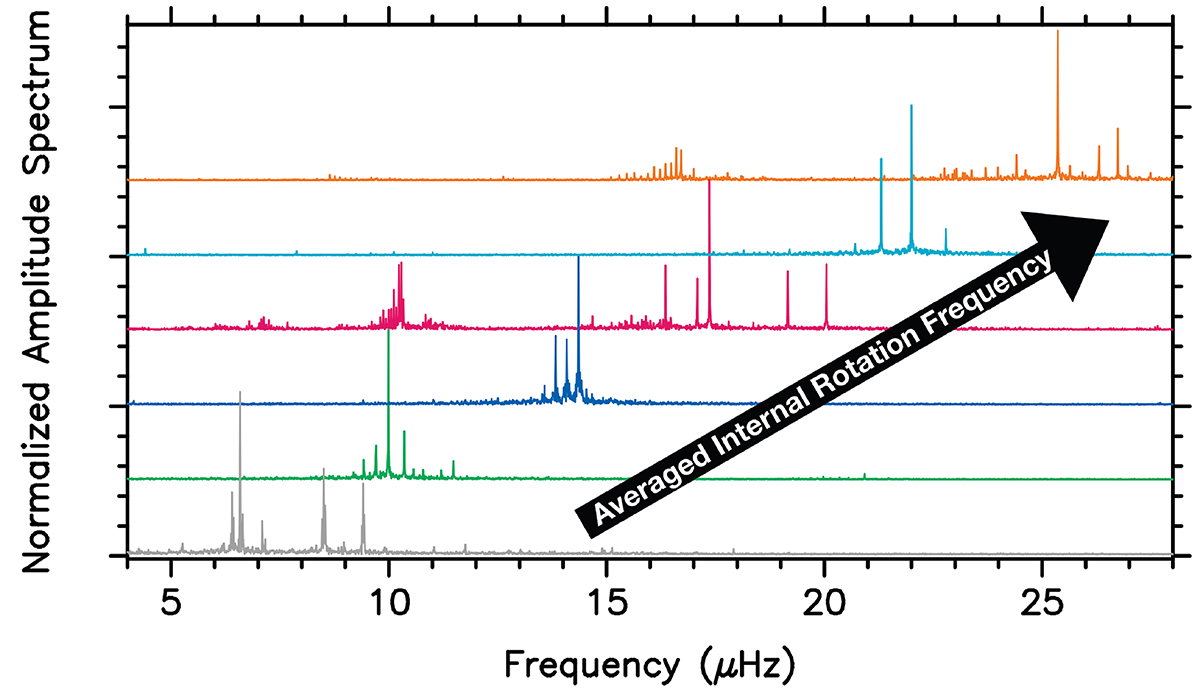Fig. 4.

Download original image
Gallery of amplitude spectra deduced from 4 yr Kepler light curves for six dipole prograde g-mode pulsators of intermediate mass. The graph illustrates typical frequency shifts in an inertial frame of reference connected with (l, m)=(1, +1) modes in such stars. The lower curve is for the only slow-rotating SPB star with detected rotationally split triplets, KIC 10526294. This star’s 19 dipole mode triplets were discovered by Pápics et al. (2014) and subjected to rotation inversion, following the forward asteroseismic modelling of its zonal dipole modes by Moravveji et al. (2015). Its internal rotation profile deduced from mode inversions led to a rotation frequency of 0.16 μHz (Triana et al. 2015). The upper curve represents the data for the γ Dor star KIC 9210943, rotating essentially rigidly, with frequency 19.73 μHz near its convective core and 19.70 μHz at its surface (Van Reeth et al. 2018).
Current usage metrics show cumulative count of Article Views (full-text article views including HTML views, PDF and ePub downloads, according to the available data) and Abstracts Views on Vision4Press platform.
Data correspond to usage on the plateform after 2015. The current usage metrics is available 48-96 hours after online publication and is updated daily on week days.
Initial download of the metrics may take a while.


